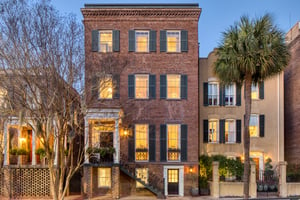Staci Donegan shares some of her favorite architects and tips for buying a historic home in the Fall 2025 issue of Savannah Magazine Homes.

By submitting this form, you are consenting to receive marketing emails from: . You can revoke your consent to receive emails at any time by using the SafeUnsubscribe® link, found at the bottom of every email. Emails are serviced by Constant Contact
"Staci Donegan is a top-notch real estate broker. She gave 100% throughout the entire process. We give Staci our highest recommendation and would easily work with her on another transaction."
"Staci gets transactions done. Her hands-on, thoughtful approach ensures that every aspect of the deal goes smoothly, and is structured for her client’s best interest."
"Our experience working with Staci was a true pleasure. She is the utmost professional and we found our dream home with her closely by our side."
"As out of town buyers, Staci's local expertise was invaluable in determining which specific blocks to focus our search on. We finally found the perfect home, and Staci crafted an ingenious offer that won out over a significantly higher one. We cannot recommend Staci enough!"
"Staci's local knowledge of the market and her knowledge of the process is unmatched."
"Staci and her team were phenomenal throughout our entire house selling/buying experience. We couldn't be happier with the house Staci helped us find and purchase. We highly recommend Staci Donegan for any home buying/selling needs."
"We cannot say enough good things about Staci Donegan. She goes above and beyond and is an amazing problem solver."

Staci Donegan shares some of her favorite architects and tips for buying a historic home in the Fall 2025 issue of Savannah Magazine Homes.

All the timeless legacy and tailored luxury of a classic historical Savannah home combine with the distinctive design savvy of Jules Bain at her urban sanctuary overlooking Monterey Square.

Amenities include an elevator, a rare attached carriage house, covered Charleston-style side porches and museum-quality architectural details.

Staci Donegan brings unprecedented passion, integrity and a strong work ethic to meet the unique needs of each client. Her unparalleled market knowledge, combined with her data-driven approach to real estate and her ability to listen, has made her one of Savannah’s real estate leaders.